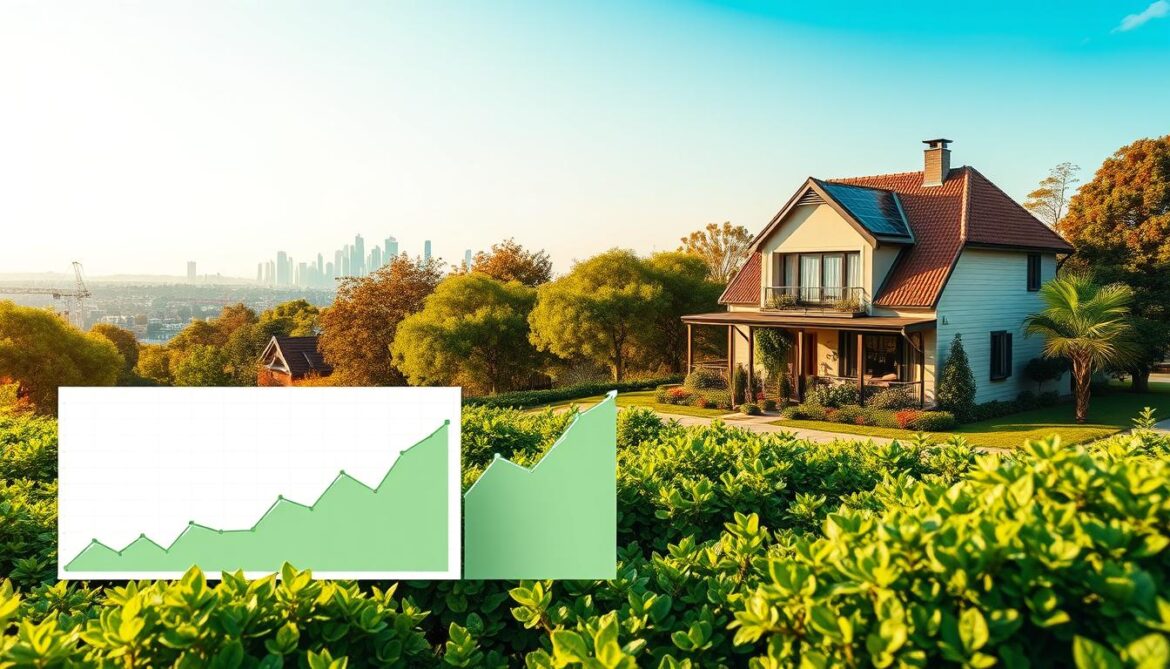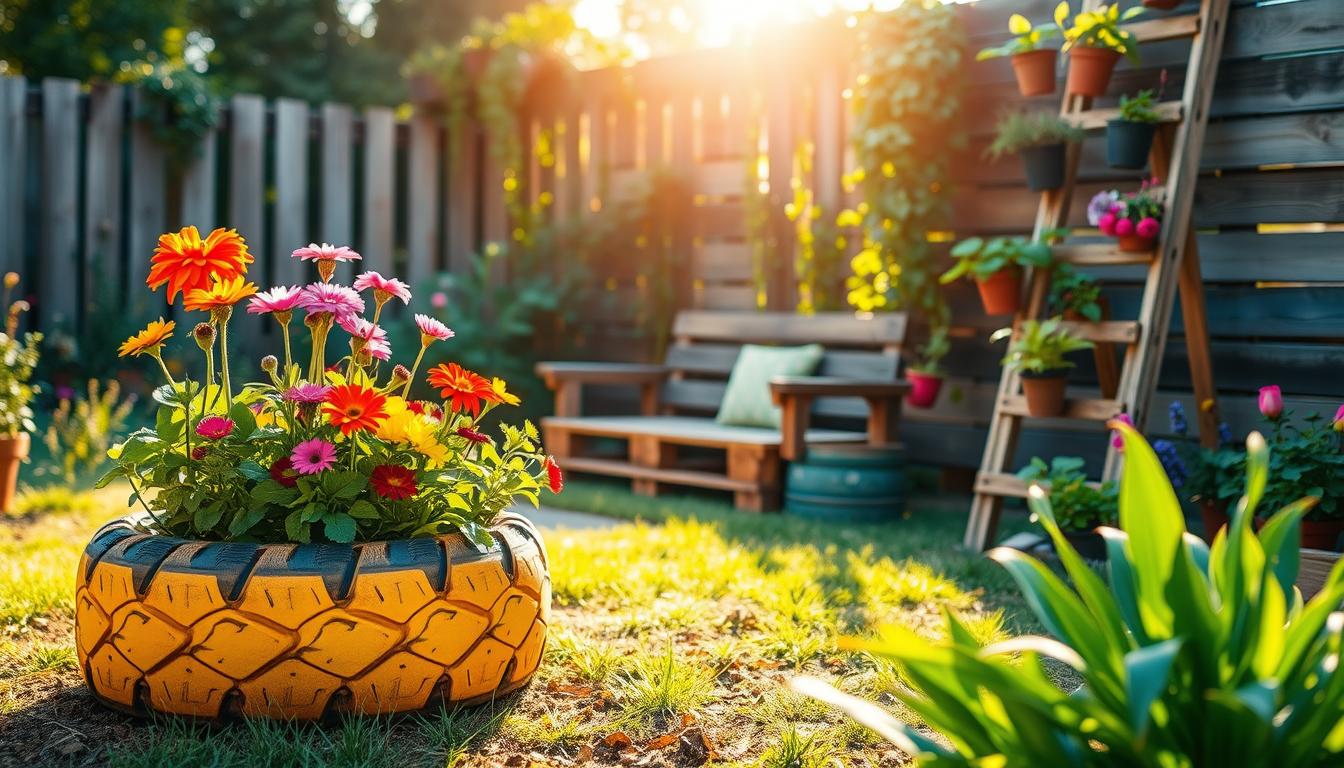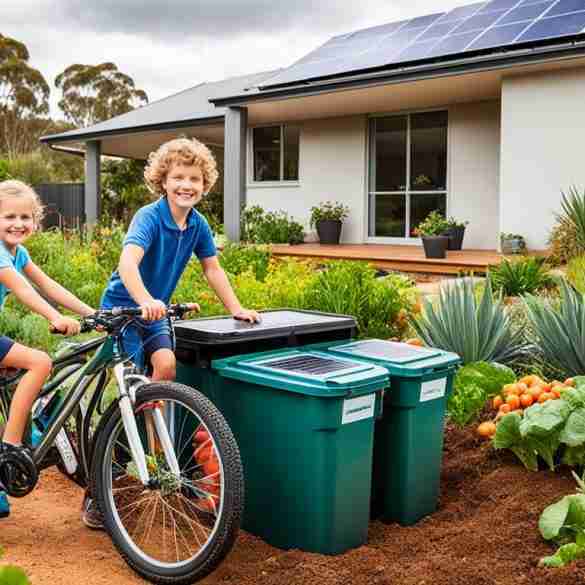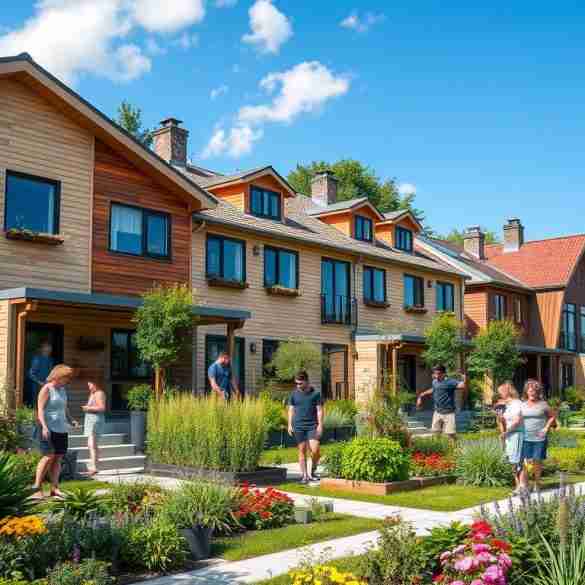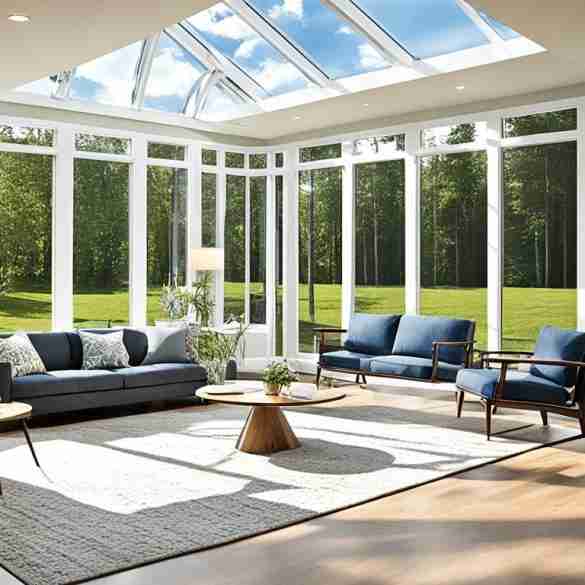“The greatest shortcoming of the human race is our inability to understand the exponential function.” – Albert Bartlett. As we embark on the journey of making our homes more sustainable, understanding the long-term returns on investment is crucial.
You’re not just saving the planet; you’re also securing a more financially stable future. Green investments in Queensland homes can yield substantial returns that go beyond simple cost savings. At Sustainable Home Magazine, we’ve researched the most cost-effective green investments specifically for Queensland’s climate and market conditions.
By weighing immediate costs against future returns, you can make informed decisions that benefit both your wallet and the environment. Our guide will walk you through real-world calculations and practical examples to help you maximize your investment potential.
Key Takeaways
- Discover how smart green investments can deliver substantial long-term returns.
- Understand the balance between initial expenditure and long-term financial benefits.
- Learn how to calculate energy savings, increased property values, and environmental impact.
- Explore the unique Queensland context and available incentives for green home investments.
- Maximize your investment potential with our researched, cost-effective green investments.
The Economics of Green Home Investments
Investing in a greener home is not just about reducing your carbon footprint; it’s also about making a savvy financial decision. As an environmentally conscious homeowner, you’re likely aware of the growing trend towards sustainable living, but you might be wondering how this impacts your investment. Green investments are becoming mainstream as savvy investors realize that environmental stewardship can coexist with economic growth.
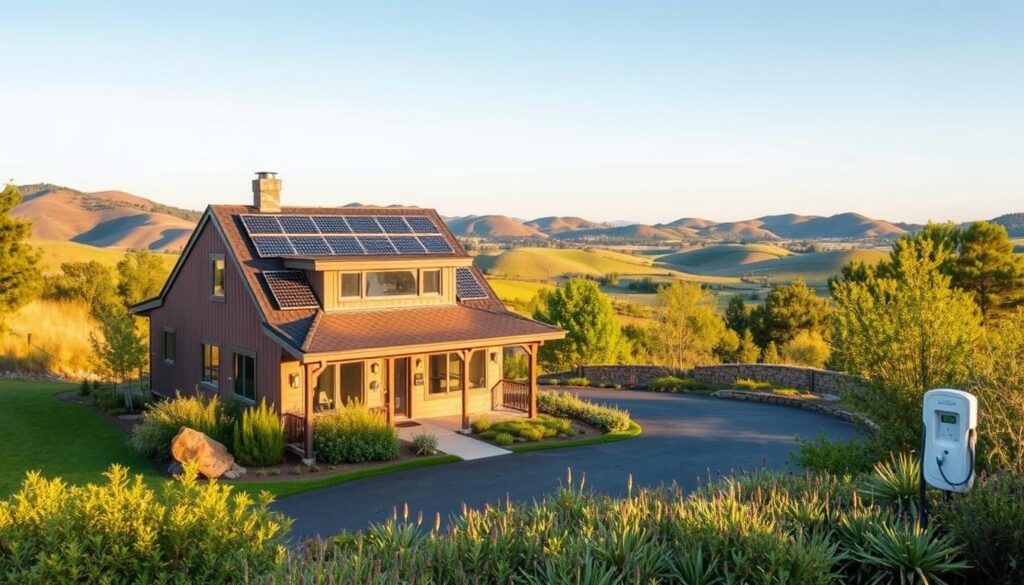
Understanding the Initial Investment Landscape
The initial cost of green home investments can vary widely, depending on the specific features and technologies you choose. For Queensland homeowners, popular sustainable features include solar panels, energy-efficient appliances, and water-conserving systems. While these upgrades may require a higher upfront cost compared to traditional alternatives, they offer significant long-term savings and returns.
- You’ll discover how the economics of green home investments work differently than traditional home improvements, with returns often accumulating over time.
- Understanding the time value of money is crucial when evaluating green investments, factoring in rising energy costs and inflation.
- Approaching green investments as part of a comprehensive home portfolio strategy can maximize your returns.
Queensland’s Unique Green Building Context
Queensland’s climate and local building codes create a unique context for green investments. The state’s abundant sunshine makes solar energy a particularly effective investment, while water conservation measures are also crucial in this region. By understanding these local factors, you can make informed decisions about which green features will provide the best returns on your investment.
As you consider green home investments, it’s essential to evaluate the potential returns and how they contribute to your overall wealth. With the right approach, green investments can enhance your property’s value, reduce utility costs, and provide a significant return on investment over time.
Breaking Down Upfront Green Costs
Breaking down the upfront costs of sustainable home features reveals the true investment required. When you consider sustainable home upgrades, understanding the initial expenditure is crucial for making informed decisions that align with your budget and sustainability goals.
Popular Sustainable Features and Their Costs
Sustainable home features come with various price tags. Here’s a breakdown of some common upgrades and their associated costs:
- Solar panels: The cost can range from $3,000 to $7,000 or more for a typical residential system, depending on the size and quality.
- Energy-efficient appliances: These can cost 10% to 50% more than their conventional counterparts, with prices varying based on brand and features.
- Water-saving fixtures: Installing low-flow showerheads and toilets can cost between $100 and $500 per fixture.
- Insulation upgrades: The cost for upgrading insulation can range from $1,000 to $3,000, depending on the area of the home and materials used.
| Feature | Initial Cost | Lifespan | Potential Savings |
|---|---|---|---|
| Solar Panels | $3,000 – $7,000 | 25+ years | Up to 100% on electricity bills |
| Energy-Efficient Appliances | 10% – 50% more than conventional | 10-15 years | 20% – 30% on energy consumption |
| Water-Saving Fixtures | $100 – $500 per fixture | 5-10 years | Up to 50% on water bills |
| Insulation Upgrades | $1,000 – $3,000 | 20+ years | Up to 30% on heating/cooling bills |
Government Incentives and Rebates in Queensland
Queensland offers various government incentives and rebates that can significantly reduce your upfront costs for sustainable home features. These include:
- The Small-scale Renewable Energy Scheme (SRES): Provides financial incentives for installing solar panels and other renewable energy systems.
- Queensland’s Energy Efficiency Program: Offers rebates for energy-efficient appliances and home upgrades.
By leveraging these incentives, homeowners can recoup a significant portion of their initial investment, making sustainable upgrades more financially accessible.
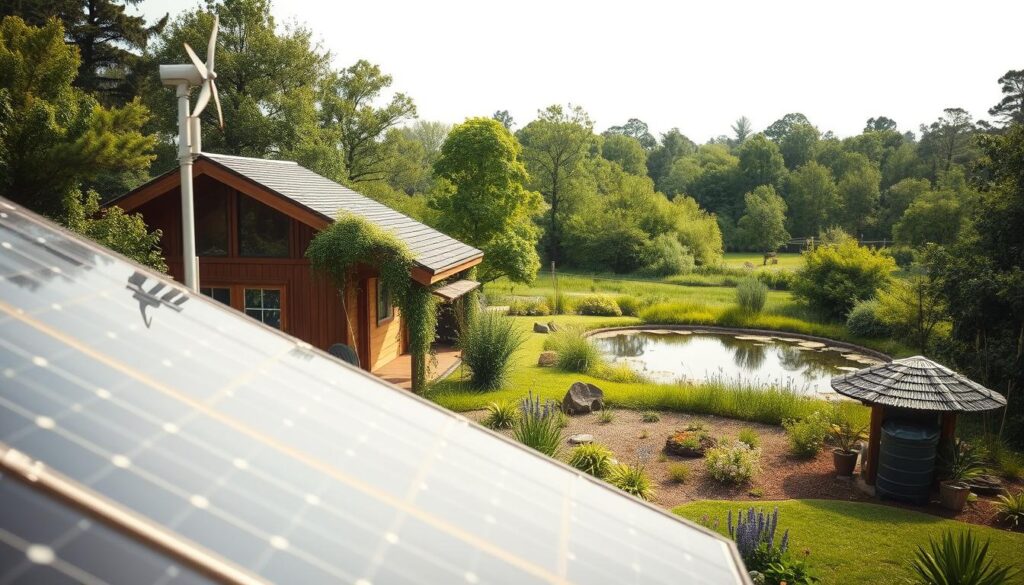
Understanding the upfront costs and available incentives helps you prioritize investments based on your budget and expected returns over time. By staging your green upgrades strategically, you can maximize rebates while minimizing out-of-pocket expenses.
Investing Wisely: Upfront Green Costs vs. Lasting QLD Returns
When considering green investments for your Queensland home, understanding the balance between upfront costs and long-term returns is crucial. As a homeowner, you’re likely eager to make sustainable choices that not only benefit the environment but also your wallet.
The Compound Effect of Energy Savings
The compound effect of energy savings works similarly to compound interest in financial investments. As utility costs continue to rise, the returns on your green investments accelerate over time. For example, installing solar panels can lead to significant energy savings, which in turn can help offset the initial investment cost. By understanding how energy savings compound, you can make more informed decisions about your green investments.
Let’s consider an example where you invest in energy-efficient appliances. Over time, the savings on your utility bills can add up, providing a return on your investment. This concept is similar to saving for retirement, where consistent investments can lead to substantial long-term gains. By applying this principle to your green investments, you can enjoy significant savings and a reduced carbon footprint.
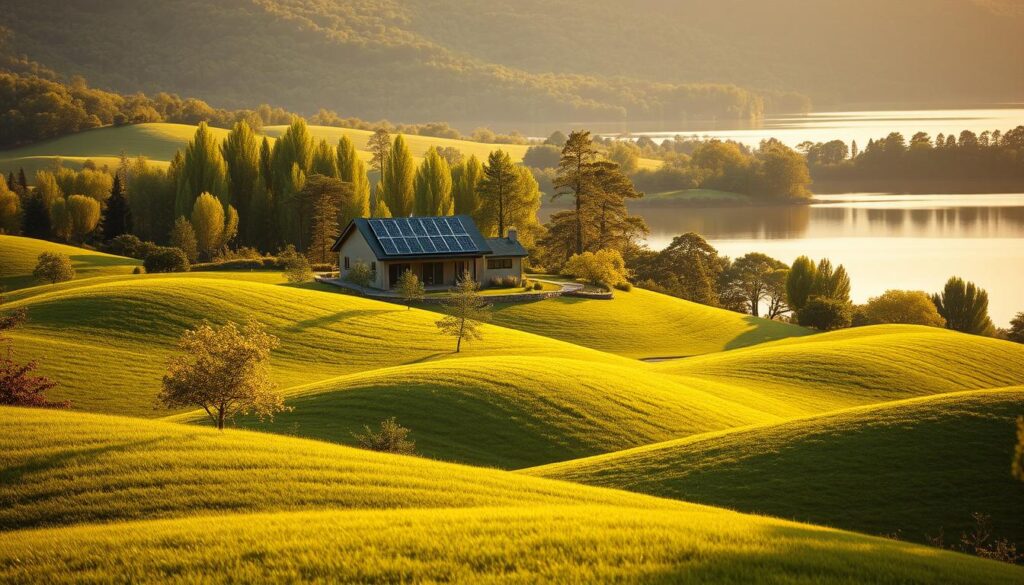
Calculating Your Break-Even Point
Calculating your break-even point is essential to understanding the viability of your green investments. This involves analyzing your energy usage patterns, the cost of the investment, and the expected savings. For instance, if you invest in solar panels, you’ll want to know how long it will take for the savings on your energy bills to equal the initial cost. By using data from your past utility bills, you can project future savings with remarkable accuracy, giving you confidence in your investment decisions.
To calculate your break-even point, you’ll need to consider several factors, including the upfront cost of the investment, the expected annual savings, and any maintenance or operational costs. By doing so, you can determine the point at which your investment begins to generate positive returns. This information can help you make informed decisions about which green features to prioritize based on your specific circumstances and goals.
Beyond Financial Returns: Hidden Benefits of Green Investments
When you invest in a sustainable home, you’re not just making a financial decision; you’re also investing in the planet’s well-being. Beyond the financial gains, green investments in Queensland homes offer numerous hidden benefits that enhance your quality of life and contribute to a more sustainable future.
Environmental Impact and Social Responsibility
Green investments have a profound impact on the environment, reducing greenhouse gas emissions and conserving natural resources. For example, a typical sustainable home in Queensland can reduce its carbon footprint by up to 50% compared to a conventional home. This not only benefits the environment but also fosters a sense of community and social responsibility.
As noted by environmental experts, “Sustainable living is not just about reducing our carbon footprint; it’s about creating a better world for future generations.” This mindset is crucial in understanding the broader impact of your investment.
Health and Comfort Advantages
Investing in a green home also means investing in your health and comfort. Sustainable homes are designed to provide better indoor air quality, thermal comfort, and natural lighting. For instance, a well-designed sustainable home can reduce the need for artificial lighting by up to 30%, improving your overall well-being.
A study on sustainable homes in Queensland found that residents experienced a significant reduction in respiratory issues and allergies due to improved indoor air quality. This is a testament to the health benefits that green investments can provide.
Property Value Appreciation in Queensland’s Market
Green-certified properties in Queensland command a premium, with prices 4-10% higher than conventional homes. Moreover, these properties sell up to 30% faster, making them a savvy investment choice. The long-term appreciation potential of sustainable properties is particularly strong in Queensland’s climate-conscious market.
| Benefits | Conventional Homes | Green-Certified Homes |
|---|---|---|
| Price Premium | 0% | 4-10% |
| Sale Speed | Standard | Up to 30% faster |
| Energy Efficiency | Lower | Higher |
As the demand for sustainable living continues to grow, investing in a green home in Queensland is not only a financially savvy decision but also a step towards a more sustainable and healthier lifestyle.
Making Smart Green Investment Decisions for Your Queensland Home
As you consider transforming your Queensland home into a sustainable haven, it’s essential to make informed decisions about green investments. By adopting a systematic approach to evaluating and prioritizing sustainable features, you can create a balanced portfolio that maximizes overall returns.
Understanding the risk/reward profile of different green investments is crucial. Unlike the volatility of the stock market, green home investments typically offer more predictable returns over time, making them an excellent complement to traditional investment strategies. For instance, investing in energy-efficient appliances can lead to significant savings on your utility bills over the years.
To make smart green investment decisions, you’ll need to balance upfront costs against potential returns while accounting for both financial and non-financial benefits. Queensland’s unique market trends, climate conditions, and energy prices create specific opportunities that smart investors can leverage for maximum returns. By staging your green investments over time, you can manage cash flow while capturing available incentives and rebates before they expire.
Real-world case studies of Queensland homeowners who have successfully implemented comprehensive green investment strategies demonstrate the potential for significant returns in both financial and quality-of-life terms. By understanding how to track and measure the performance of your green investments over time, you can quantify your actual returns and make data-driven decisions about future improvements.
The journey toward a sustainable home isn’t just about money—it’s about creating a living environment that aligns with your values while still making sound financial sense. By following the guidelines outlined in this article, you’ll be well on your way to making informed decisions that benefit both your wallet and the planet. Visit Sustainable Home Magazine for more insights on sustainable living and green investments.

